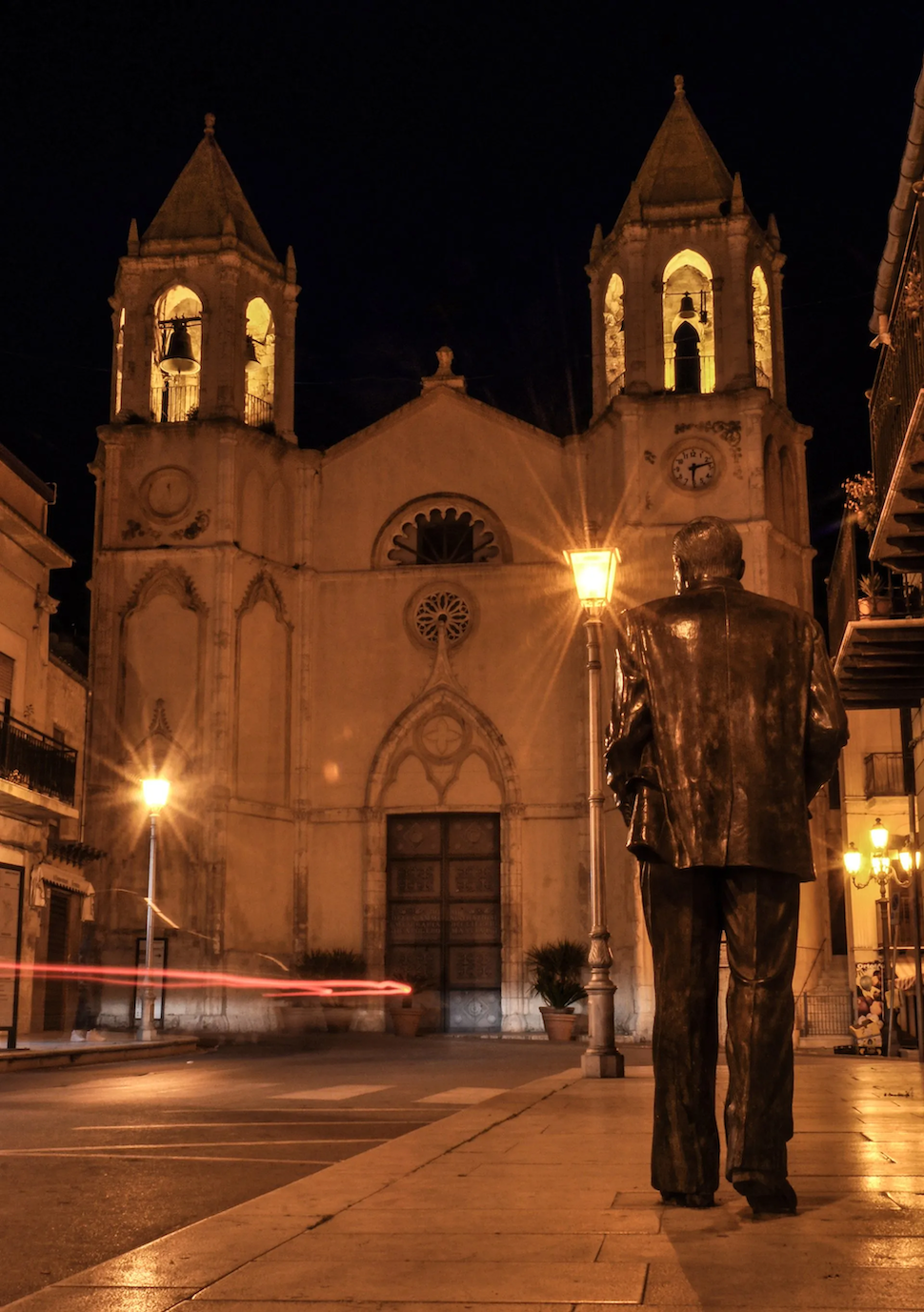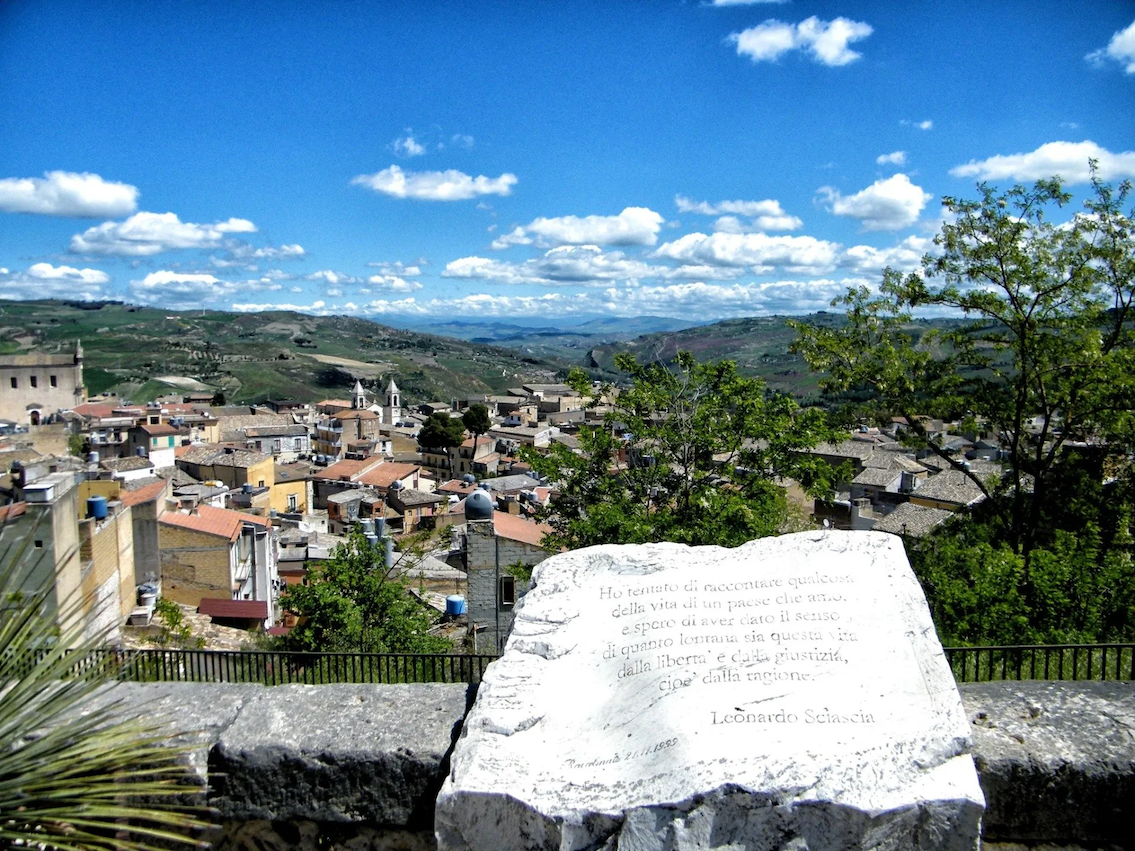The origin of the name contrasts greatly with the richness of the territory. Racalmuto in fact derives from the Arabic “Rahal Maut”, literally Dead Village, since the Arabs found the population of the village heavily decimated by the plague. Despite this, the Saracens settled there to exploit the area that stood on a fertile valley, close to an abundant water source.
Reading the maps of the time it would seem that the ancient town was defended by a castle. In fact, it would most likely be the structure on which the Chiaramontano Castle was built in the early 14th century, which still embellishes the historic center.
If these places fascinate you, you can visit Racalmuto with one of our tours in Sicily:
⇒Magna Via Francigena: a piedi da Palermo ad Agrigento
What to see in Racalmuto
Racalmuto is one of the most beautiful cities in Sicily.
Why not decide to spend a carefree day to discover the beauties of this fascinating village in Sicily?
If you want to spend a day in Racalmuto, we have prepared a list of things to see and visit in peace:
- Chiaramontano Castle
- Statue of Leonardo Sciascia
- Gibillina, the Castelluccio Svevo
- Nove Cannoli Fountain
And now let's set off together to discover the most identifying places in Racalmuto!

Chiaramontano Castle
The imposing castle dominates the beautiful historic center of Racalmuto, and originally developed on three uniform levels, also similar in the subdivision and succession of internal rooms communicating with each other and delimiting the internal patio. The castle walls have two large circular towers, the tower on the right was adapted as a lookout after the last restoration work.
The south-west side is bordered by small buildings and the north side by two rows of twelve windows with a surrounding wall that encloses a plot of land.
The castle was built on military wall structures dating back to the 13th century, at the time of the barony of Roberto Malcovenant, a French nobleman who arrived in Sicily following King Roger of Hauteville. At the beginning of the 14th century, Federico II Chiaramonte, having received ownership of it together with the surrounding fiefdom from Frederick of Aragon, carried out interventions that made the structure even more imposing and majestic.
It was a very singular structure because for Sicily at the time, it was not very common to use a fortress also as a residence for the feudal lord.
Gibillina, the Castelluccio Svevo
Built in the 1230s by order of Frederick II, it was used as the management center of the fiefdom, a warehouse for storing wheat and also for entertainment. Even today the building is privately owned.
Nove Cannoli Fountain
The fountain, so called because it has nine jets of water, is a public work built in the second half of the 19th century. The fountain is fed by the canal stream, whose waters were conveyed downstream from the town in 1875. In the center of the square of the same name you can still admire this important architectural work which stands in the shadow of the Chiaramontano Castle.
Leonardo Sciascia Statue
Among Racalmuto's illustrious figures, Leonardo Sciascia is certainly the most recognized and important. He was in fact a teacher, writer and journalist, he dedicated his life to knowing, studying and denouncing the contradictions of his land and of humanity through his works. Due to his strong Enlightenment-inspired thinking to which he added a strong pessimistic sense of justice, he is still considered one of the most influential figures of the twentieth century. The civil commitment also took the form of intense political activity. After being a city councilor in Palermo, he also sat on the benches of Parliament. In those years he was part of the commissions of inquiry into mafia phenomena and the kidnapping of Aldo Moro. Sciascia's literary debut occurred in 1950 with Fables of Dictatorship. The protagonists of the story are animals with clear and evident morals. The success was immediate even among the authors of the time including Pier Paolo Pasolini who published a very positive review. The most important work is undoubtedly "Il giorno della civetta" published for the first time in 1961. The detective story, which is inspired by the mafia-style murder of a trade unionist, which occurred in Sciascia fourteen years earlier, is one of the first forms of denunciation on the nascent phenomenon of the mafia and the equally dramatic problem of the connivance of some representatives of the institutions. His activity was varied and continuous. Through the recurring use of the story, Sciascia intended to clear some myths of post-war society, such as the figure of the uncle from America in "Gli zii di Sicilia" and deal with themes such as the unification of the Kingdom of Italy from a of a Sicilian boy. Stories like those contained in the collection "The sea color of wine" which outline, with a sadly ironic tone, an image of the society of the time steeped in corruption. On October 25, 1997, a three-dimensional bronze statue dedicated to him was placed on the sidewalk along Corso Garibaldi, near the Mother Church, where the writer could often be met.
What to do in Racalmuto - the Slow Active Tours proposal
Once you have discovered the wonders hidden among the streets of Racalmuto, the time has come to get to the heart of the sounds and smells of this ancient village.
-
Visit to the Santuario di Santa Maria del Monte
Particularly felt by the citizens of Racalmuto is the devotion to Santa Maria del Monte with the procession to the Sanctuary dedicated to her, located on the highest mountain in the city. A tradition that has been handed down since the sixteenth century with the arrival of the Statue of the Holy Mary in the city.
-
Municipal Theatre
The jewel of the city is certainly the beautiful Municipal Theater named after Queen Margherita. It is a building dating back to 1860, richly decorated, home since 2002 to an interesting permanent exhibition of paintings, objects and theatrical costumes.
Among the various artistic directors of the theater there is also an important Sicilian writer, a great friend of Leonardo Sciascia: Andrea Camileri. -
Sciascia House
Behind the Municipal Theatre, it is possible to visit the house where Leonardo Sciascia spent his childhood. Casa Sciascia which today stands in the street that bears his name, at number 37, is once again open to the public thanks to the commitment of the Association of the same name which has transformed it into a cultural center dedicated to the works of the Racalmuto writer and to all Sicilian works.
-
Magna Via Francigena: from Palermo to Agrigento
Slow Active Tours offers an exciting and intriguing walking journey to discover the hidden beauties of Sicily from north to south, from the Tyrrhenian Sea to the Mediterranean Sea.
Festivals and Popular celebrations in Racalmuto
The most important event in Racalmuto is undoubtedly the Feast of Maria Santissima del Monte. The festival begins on the Friday following the first Sunday of July and follows a rich program of events dictated by tradition. Friday evening begins when the re-enactment of the legend of the arrival of the statue of the Madonna on an ox cart followed by a medieval historical procession in costume takes place. The key moment is expected between Saturday and Sunday when thousands of citizens and enthusiasts from all over Sicily flock to the streets of Racalmuto. In the heart of the historic center, the parade of the traditional "Ceri" takes place, at the end of which, after the display of lights, the flag of the "Cero dei Borgesi" is taken over. Sunday is the real day of celebration. After mass at the Sanctuary, the ancient tradition of " prummisiuni " takes place, i.e. the delivery of the bags of wheat brought as a sign of devotion. At the end of the day, a highly anticipated fireworks display.
Typical dishes of Racalmuto
Among the typical flavors of Racalmuto we certainly find sweet tarallo, a specialty known and appreciated throughout Sicily. It is a soft biscuit covered with a delicious crunchy icing which preserves the fresh flavor of Sicilian lemons inside.
Eating and Drinking in Racalmuto
Here are some suggestions from the area:
Lo Zenzero restaurant in Regina Margherita street 22. Very nice location located in a very suggestive place in the town between the municipal theater and near the square.
The King of Pizza in Filippo Villa street. Delicious pizzeria in the center of Racalmuto, a few minutes walk from the statue of Leonardo Sciascia.
Bistro 73 restaurant in Garibaldi Street 75. Very nice place in the center of Racalmuto where it is possible to taste traditional village and regional dishes prepared with great care and skill.
So what are you waiting for? Get your stuff ready and off you go!





